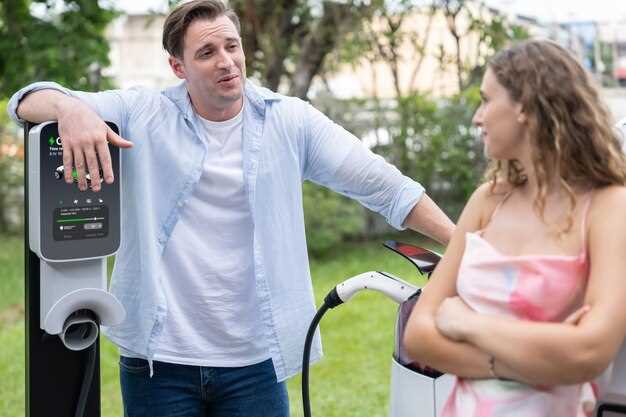
The rise of electric vehicles (EVs) has significantly impacted the motorcycle industry, leading to the emergence of electric motorcycles as a viable alternative to traditional gas-powered bikes. The pros of electric motorcycles are numerous, often focusing on their environmental benefits, lower operating costs, and increasingly impressive technological advancements. Enthusiasts and casual riders alike are drawn to the idea of a cleaner and more sustainable mode of transportation, providing a compelling case for the adoption of electric models.
However, alongside these advantages, there are also disadvantages that need to be considered. Issues such as limited range, longer refueling times, and potentially higher initial purchase prices can deter some buyers. Furthermore, the infrastructure for charging stations is still developing in many areas, which may limit the practical use of electric motorcycles for long-distance travel. Understanding both the pros and cons of electric motorcycles is essential for potential buyers who want to make an informed decision about entering the EV market.
Cost Comparisons: Long-Term Savings on Electric Motorcycles

When evaluating the overall cost of ownership, electric motorcycles (EVs) present several pros compared to traditional gasoline-powered bikes. The initial purchase price might be higher for electric models; however, the long-term savings can be significant.
One of the primary savings stems from lower operating costs. Electric motorcycles typically have reduced fuel costs, as electricity is generally cheaper than gasoline. Additionally, maintenance expenses are significantly lower due to fewer moving parts in electric motors, leading to less wear and tear. For instance, there are no oil changes, and brake systems can last longer due to regenerative braking technology.
Insurance costs for electric motorcycles may also be lower, as many insurance providers offer discounts for EVs, recognizing their safety features and lower risk of theft. Moreover, some regions provide tax incentives and rebates for purchasing electric vehicles, further offsetting the initial investment.
Charging an electric motorcycle at home can contribute to savings over time. The costs of charging are often much less than refueling with gasoline, especially when utilizing off-peak electricity rates. Furthermore, the availability of public charging stations and potential for free charging can enhance these savings.
While the upfront costs for electric motorcycles may seem daunting, their long-term financial benefits become apparent when considering the total cost of ownership. The combination of reduced fuel, maintenance, and insurance costs, alongside any available financial incentives, makes electric motorcycles an increasingly attractive option for budget-conscious riders.
Performance Metrics: How Electric Motorcycles Stack Up Against Gas Models

When comparing electric motorcycles (EVs) to their gas-powered counterparts, various performance metrics come into play. Understanding these differences can help potential buyers make informed decisions. Below are some key areas to consider:
- Acceleration: Electric motorcycles typically boast rapid acceleration due to instant torque delivery. Many electric models can outperform gas motorcycles in 0-60 mph times.
- Top Speed: While high-end electric bikes can achieve impressive top speeds, most entry-level electric models generally have lower maximum speeds than powerful gas bikes. However, advancements in technology are gradually closing this gap.
- Range: One of the significant drawbacks of electric motorcycles remains range. Most electric models offer fewer miles on a single charge compared to gas models that can travel further on a full tank. However, the technology is continually improving.
- Charging Time: Refueling a gas motorcycle is quick, taking only a few minutes. In contrast, charging an electric motorcycle can take anywhere from 30 minutes at a fast charger to several hours at home, which can be a disadvantage for long-distance riders.
- Maintenance: Electric motorcycles generally require less maintenance than gas models. Electric drivetrains have fewer moving parts, leading to lower long-term costs and less downtime.
- Environmental Impact: EVs produce zero emissions during operation, making them an eco-friendly option. Gas motorcycles, on the other hand, contribute to air pollution and greenhouse gas emissions.
In summary, while electric motorcycles have clear advantages in maintenance and environmental impact, gas models often excel in range, recharge time, and top speed. Understanding these metrics can guide riders in choosing the best option for their needs.
Charging Infrastructure: Accessibility Issues for Electric Motorcycle Owners
One of the significant advantages of electric motorcycles is their reduced environmental impact compared to traditional gas-powered bikes. However, this benefit is often overshadowed by the challenges related to charging infrastructure. Accessibility issues can significantly affect the convenience and practicality of owning an electric motorcycle.
Many urban areas are gradually increasing the availability of charging stations, but the coverage is still inconsistent. In less populated regions, the lack of charging points can leave riders with limited options for long-distance travel. This can create anxiety about range limitations, which detracts from the overall pros of owning an electric motorcycle.
Furthermore, the type of charging infrastructure available can also pose challenges. Fast chargers designed for cars may not be compatible with all electric motorcycles, causing additional inconvenience for riders. Additionally, if charging stations are primarily located in urban settings, rural riders might find themselves with few or no charging options, leading to frustration.
Another concern is the accessibility of charging facilities in high-demand areas. Many charging stations may be busy or out of service when needed, creating unnecessary delays for electric motorcycle owners. This inconsistency can discourage potential buyers who fear being stranded due to a lack of charging options during their travels.
In summary, while electric motorcycles present various pros in terms of reducing carbon emissions, the current state of charging infrastructure raises significant cons. Addressing the accessibility issues of charging facilities is vital to promote wider adoption and ensure a seamless experience for electric motorcycle owners.
